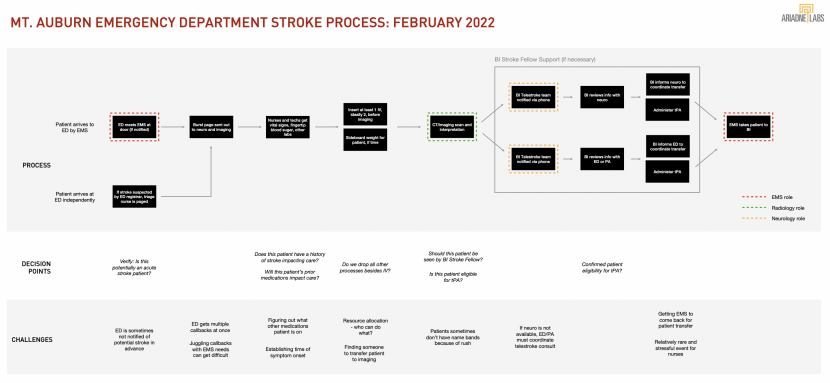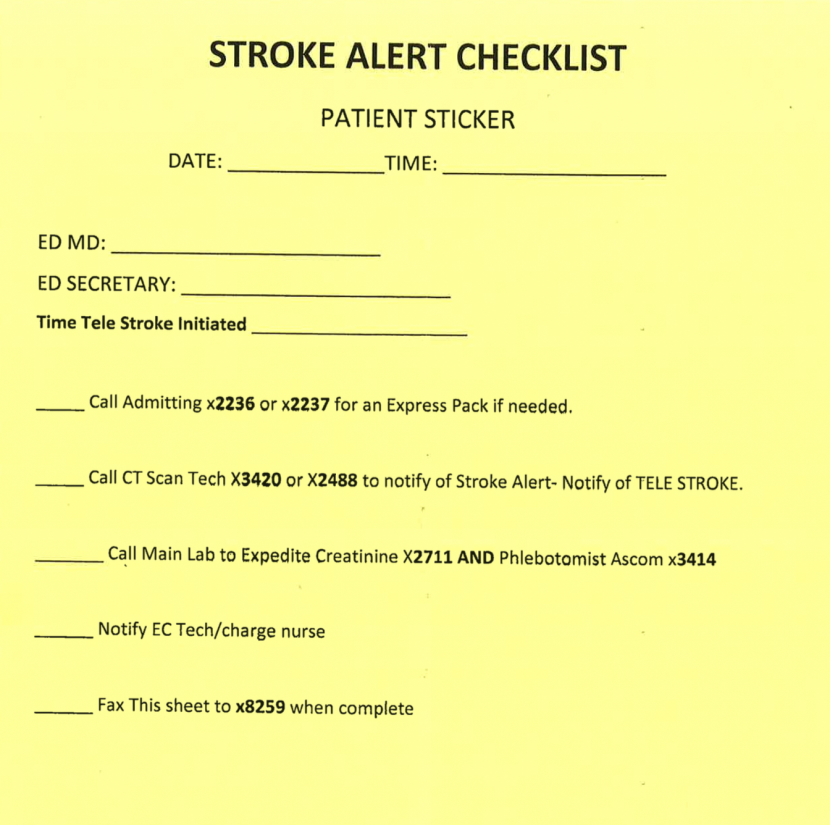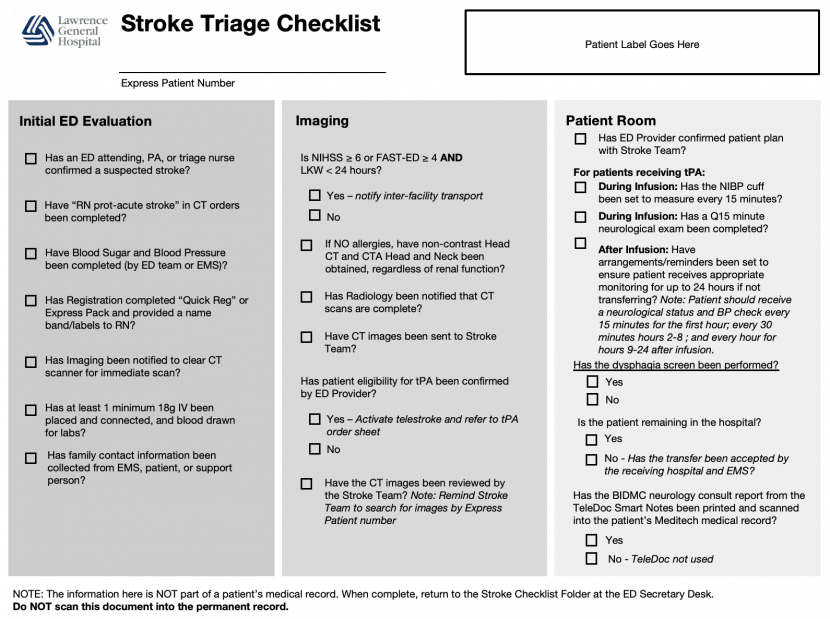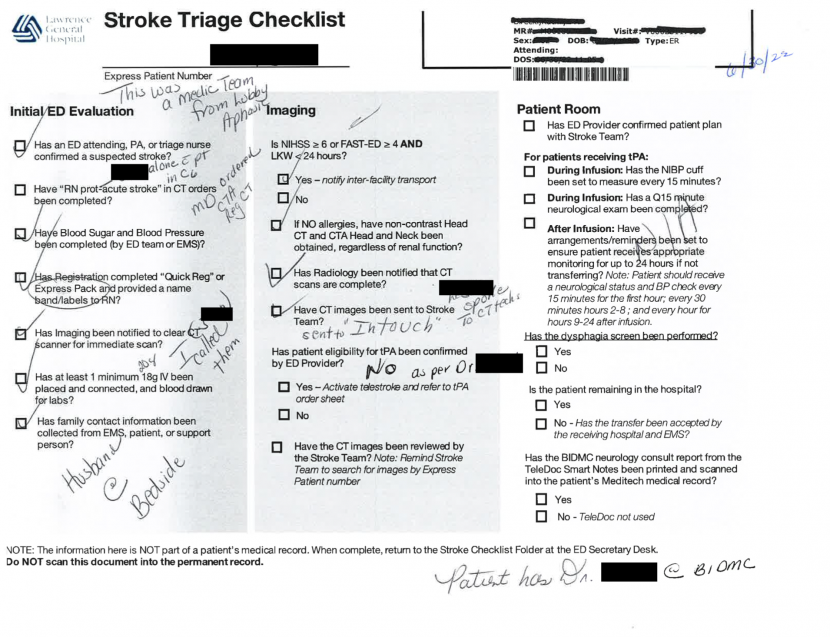stroke management – harvard hospitals
Opportunity: When a stroke case comes into the emergency department, time is of essence, and this is especially true for acute ischemic strokes, which can be eligible for a life-saving treatment called EVT (endovascular thrombectomy) if diagnosed in time.. Dr. Sandeep Kumar, a stroke neurologist at Beth Israel Deaconess Medical Center in Boston, noticed that EVT stroke case management was taking quite a bit longer than it should at both BIDMC as well as its partner hospitals, which transfer EVT cases to BIDMC. Checklists are commonly used in the healthcare field as a practical tool to support adherence to protocols, and the American Heart Association had published a stroke checklist in 2019 for general stroke management use. However, Dr. Kumar realized that this checklist could be better designed for EVT strokes, given how varied emergency departments EVT stroke management can be.
Year: 2021-2022
Role: Design lead
Process: Our team from Ariadne Labs recruited two partner hospitals in the Boston area – Mount Auburn and Lawrence General – to design, test, and pilot a new EVT stroke management checklist within their emergency departments. As the project’s design lead, I led the initial process of researching workflows and designing the checklists with the MAH and LGH stroke teams (which included ED physicians, neurologists, nurses, imaging technicians, administrators, and more). Since this work was conducted in the midst of the COVID-19 pandemic, the project was conducted remotely, with only one site visit conducted once it was safe to do so. Together, we mapped out the stroke management process in each ED, explored the physical and mental spaces that each step occupied, identified areas for improvement, and developed a new stroke checklist customized to fit each ED’s needs. The checklist was field-tested by the broader ED staff at each hospital before being formally piloted beginning in October 2022.
Outputs: Our team created workflow process maps for each hospital ED (which proved useful for the ED staff for their own QI initiatives as well), customized stroke checklists for each hospital, and some accompanying materials at the request of each ED team, such as a tPA (tissue plasminogen activator, commonly administered before EVT) administration checklist to help nurses and techs.
Our checklists were a success in field testing, with both hospital teams reporting that ED staff had found the checklist useful as a memory aid and cognitive offloading tool. After the pilot period, results from the study will be published in stroke journals and the checklists made available for broader public use.



